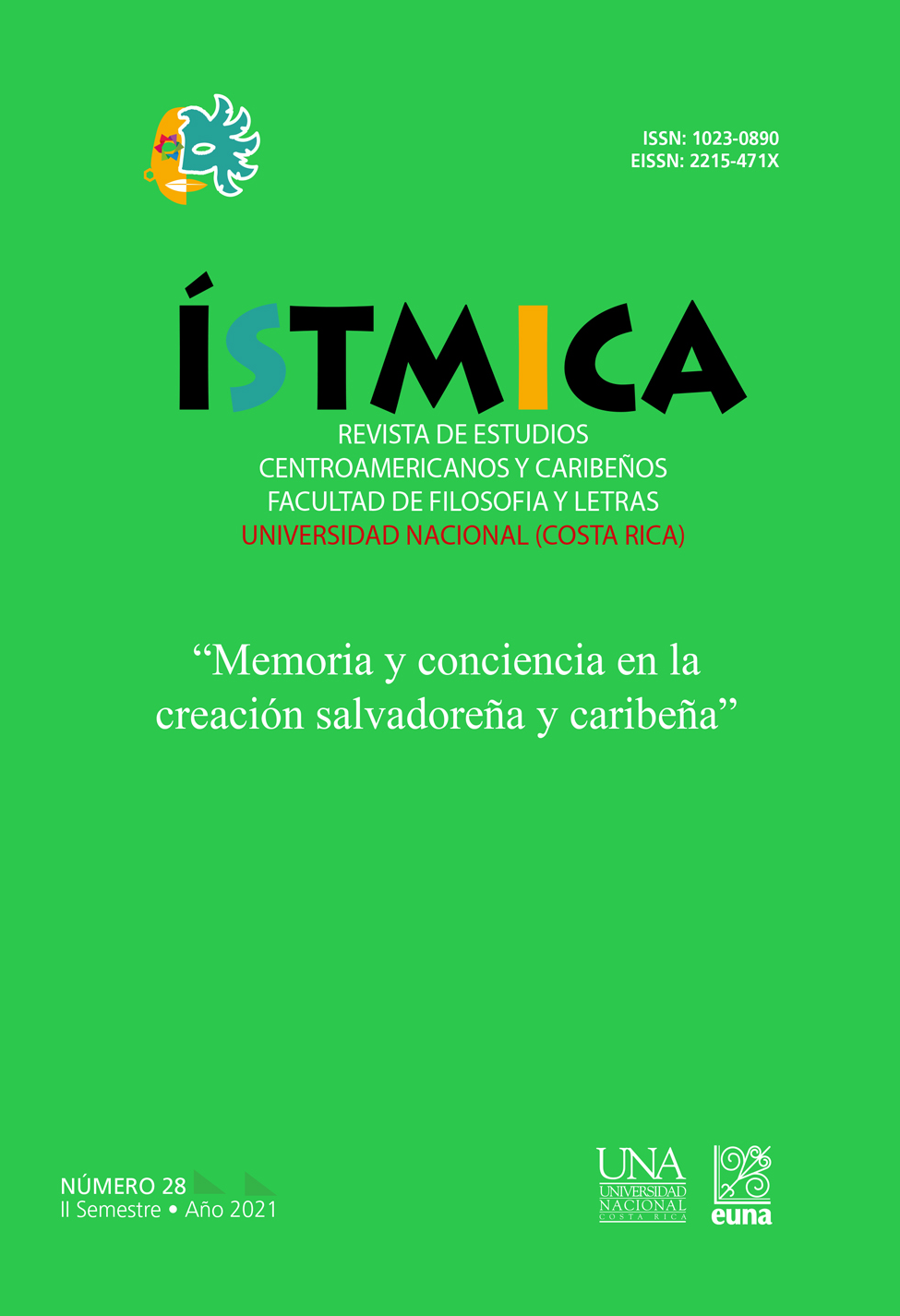Reggae and Rastafarian ethos
DOI:
https://doi.org/10.15359/istmica.28.7Keywords:
Reggae, Rastafarian, Haile Selassie, Marcus Garvey, Ethiopia, dreadlocks, marijuanaAbstract
This article seeks to point out that singers such as Bob Marley, Bunny Wailer and Peter Tosh have exercised a kind of tribal education that has allowed the Rastafarian community to learn about the patterns of social and moral behavior that have come to be considered emblematic of their value system. To achieve our purpose we will quote and gloss a set of songs from that musical genre that over the decades has proclaimed the divine nature of Haile Selassie, the idea of a return to Africa, the historical and political importance of Marcus Garvey, the sacramental character of the marijuana use and the symbolic value of dreadlocks.
References
- Barrow, Steve, Dalton, Peter. 2004. The Rough Guide to Reggae. The Definitive Guide to Jamaican Music from Ska through Roots to Bashment. Londres: Rough Guides Ltd.
- Campbell, Horace. 1985.Rasta and Resistance. From Marcus Garvey to Walter Rodney. Londres: Hansib.
- Daily Gleaner. 1930. “Newly Enthroned Rulers of Abyssinia and Extent of Their Domain.” Daily Gleaner. [Kingston] 14 nov: 6.
- Dawes, Kwame. 2002. Bob Marley Lyrical Genius. Londres: Sanctuary.
- Dawes, Kwame. 2004.Natural Mysticism. Towards a Reggae Aesthetic. Leeds: Peepal Tree.
- Glissant, Édouard. 2002. Introducción a una poética de lo diverso. Barcelona: Ediciones del Bronce.
- Havelock, Eric. 1994.Prefacio a Platón.Madrid: Visor.
- Hebdige, Dick. 2004. Subcultura. El significado del estilo.Barcelona (España): Paidós.
- Kapuscinski, Ryszard. 2001. El Emperador. Barcelona: Anagrama.
- Moore, W. Robert.1931. “Coronation Days in Addis Ababa.” The National Geographic Magazine, nº 6: 738-746.
- Smith, M. G., Roy Augier, Rex Nettleford. 1967. “The Rastafari Movement in Kingston, Jamaica. Part I”. Caribbean Quarterly, nº 3: 3-29.
- Southard, Addison E. 1931. “Haile Selassie The First, Formely Ras Tafari Succeeds to the World´s Oldest Continuously Sovereign Throne.” The National Geographic Magazine, nº 6: 679-738.
- Walcott, Derek. 2002. La voz del crepúsculo. Madrid: Alianza.
Grabaciones discográficas
- Holness, Winston.1971. “Blood and Fire”. Tougher Than Though. The Story of the Jamaican Music,Island Records Ltd.
- I Roy.1976. “Don´t Touch I Dreads”. Original Deejay @ King Tubby’s Studio,Attack Records.
- Kong, Leslie. 1969. “Rivers of Babylon”. Tougher Than Though. The Story of the Jamaican Music, Island Records Ltd.
- Malcolm, Carlos y Noel Williams. 1958. “Ethiopia”. Rastafari.The Dreads enter Babylon 1955-83, Soul Jazz Records.
- Marley, Bob. 1979. “Babylon System”. Survival, The Island Def Jam Music Group.
- Marley, Bob. 1979. “Ride Natty Ride”. Survival, The Island Def Jam Music Group.
- Marley, Bob y Lee Perry.1976. “Jah Live”. Rastaman Vibration, The Island Def Jam Music Group.
- Marley, Bob, y Lee Perry.1983. “Rastaman, Live Up!”. Confrontation, The Island Def Jam Music Group.
- Marley, Damian, Stephen Marley y P. Levy. 2005. “Confrontation”. Welcome to Jamrock, Universal Records.
- Mutabaruka. 1994. “Garvey”. The Ultimate Collection, Sanachie Entertainment Corp.
- O’Riley, Bunny. 1976. “Dream Land”. Blackheart Man, Island.
- Tosh, Peter. 1976.“Equal Rights”. Honorary Citizen, Columbia-Legacy.
- Tosh Peter. 1978. “Bush Doctor”. Honorary Citizen, Columbia-Legacy.
Published
How to Cite
Issue
Section
License
Las personas autoras que publiquen en esta revista permiten cesión gratuita, exclusiva, de ámbito mundial de sus derechos de autoría a la Universidad Nacional (Costa Rica), conservando únicamente sus derechos morales sobre la obra publicada.
Los artículos pueden ser citados y copiados, citando a la persona autora y la fuente. Todos los artículos publicados en la Revista Ístmica están protegidos bajo una Licencia Creative Commons Atribución-NoComercial-CompartirIgual 4.0 Internacional








